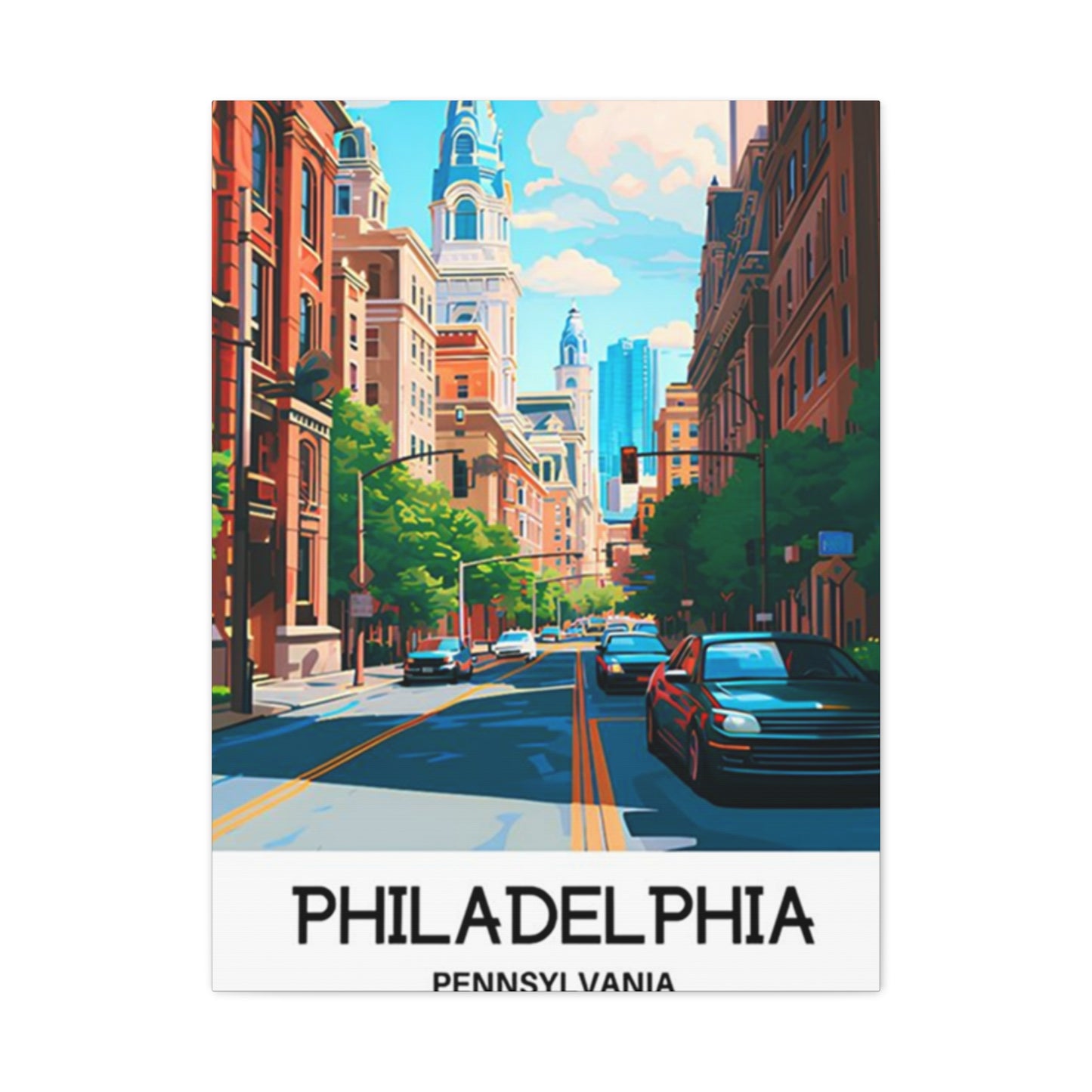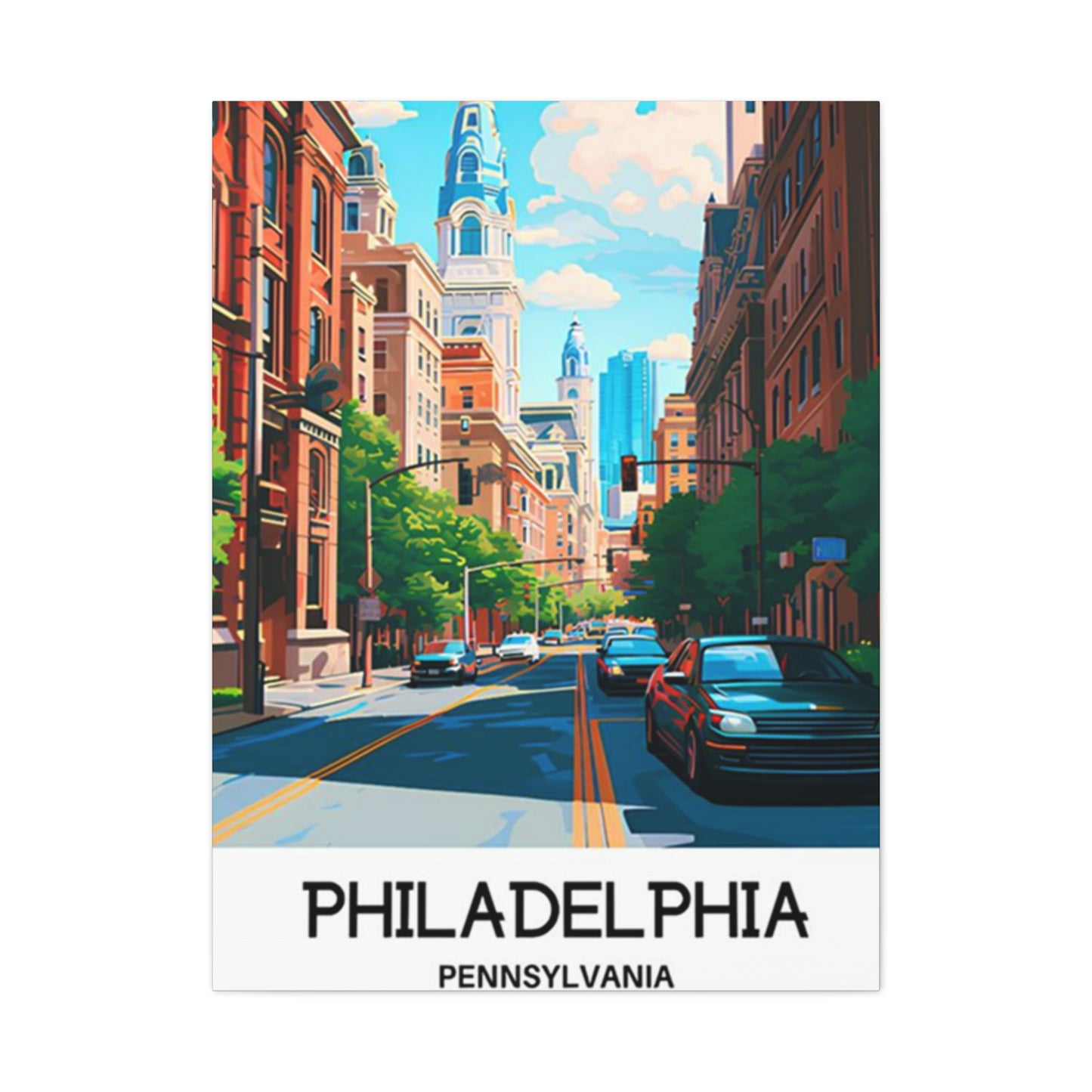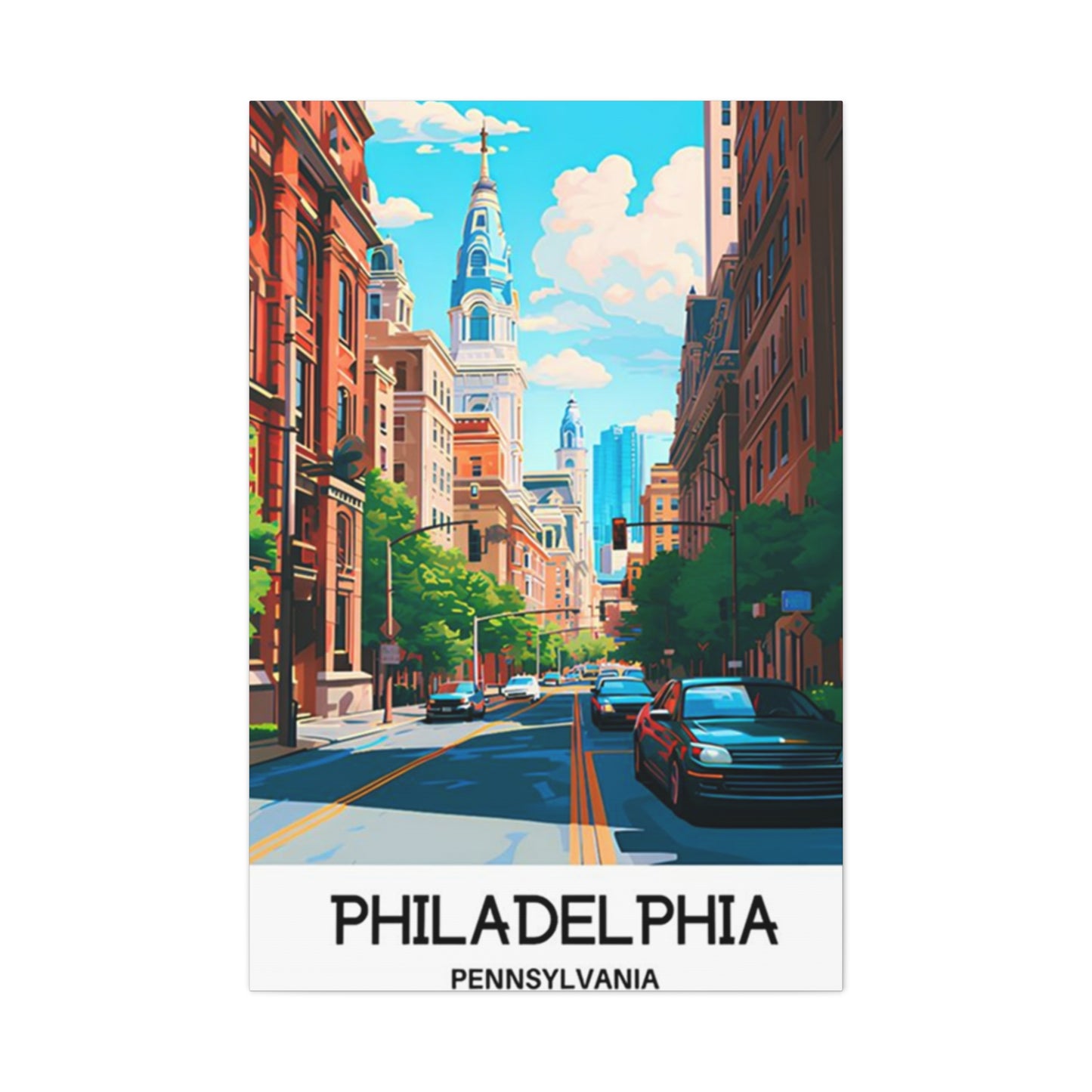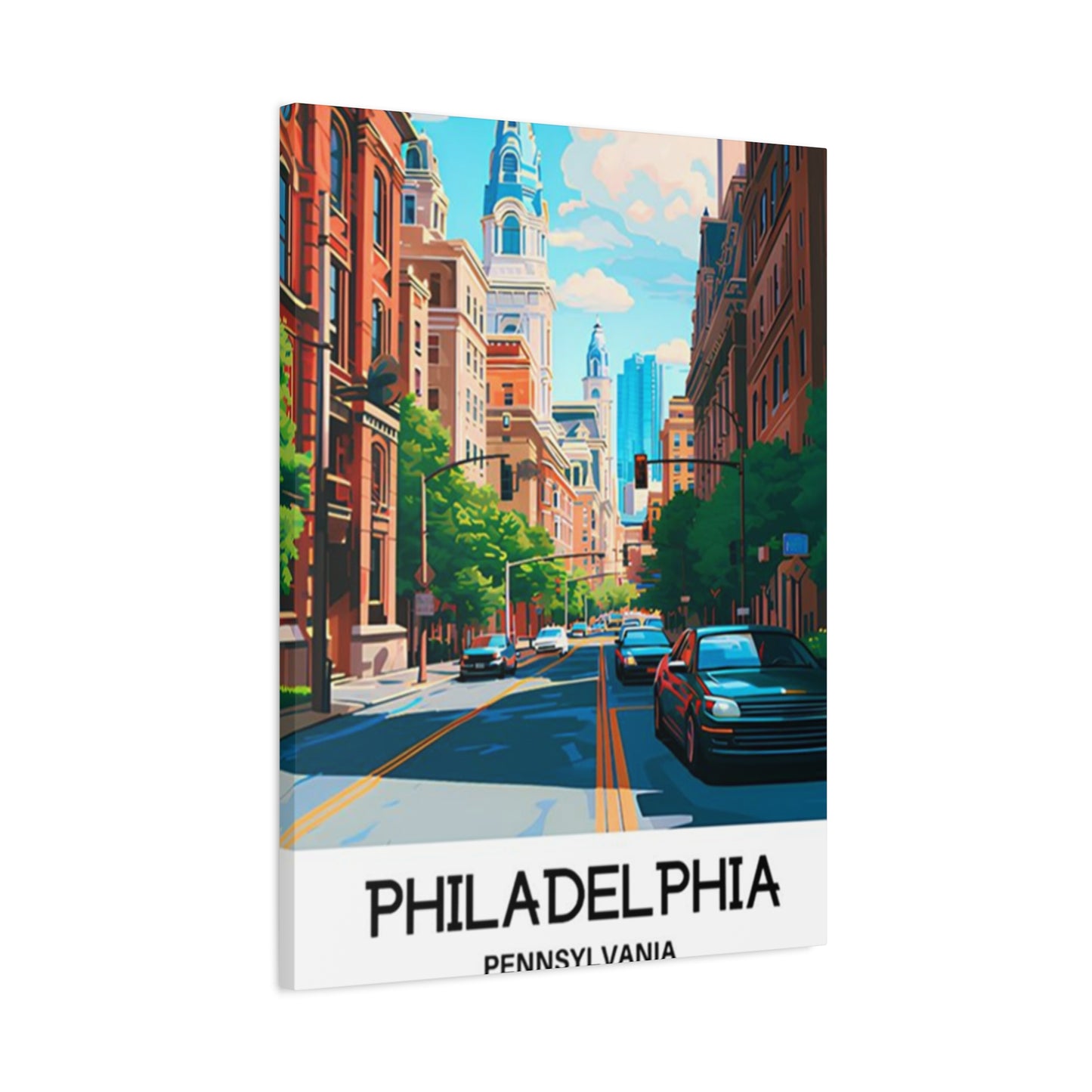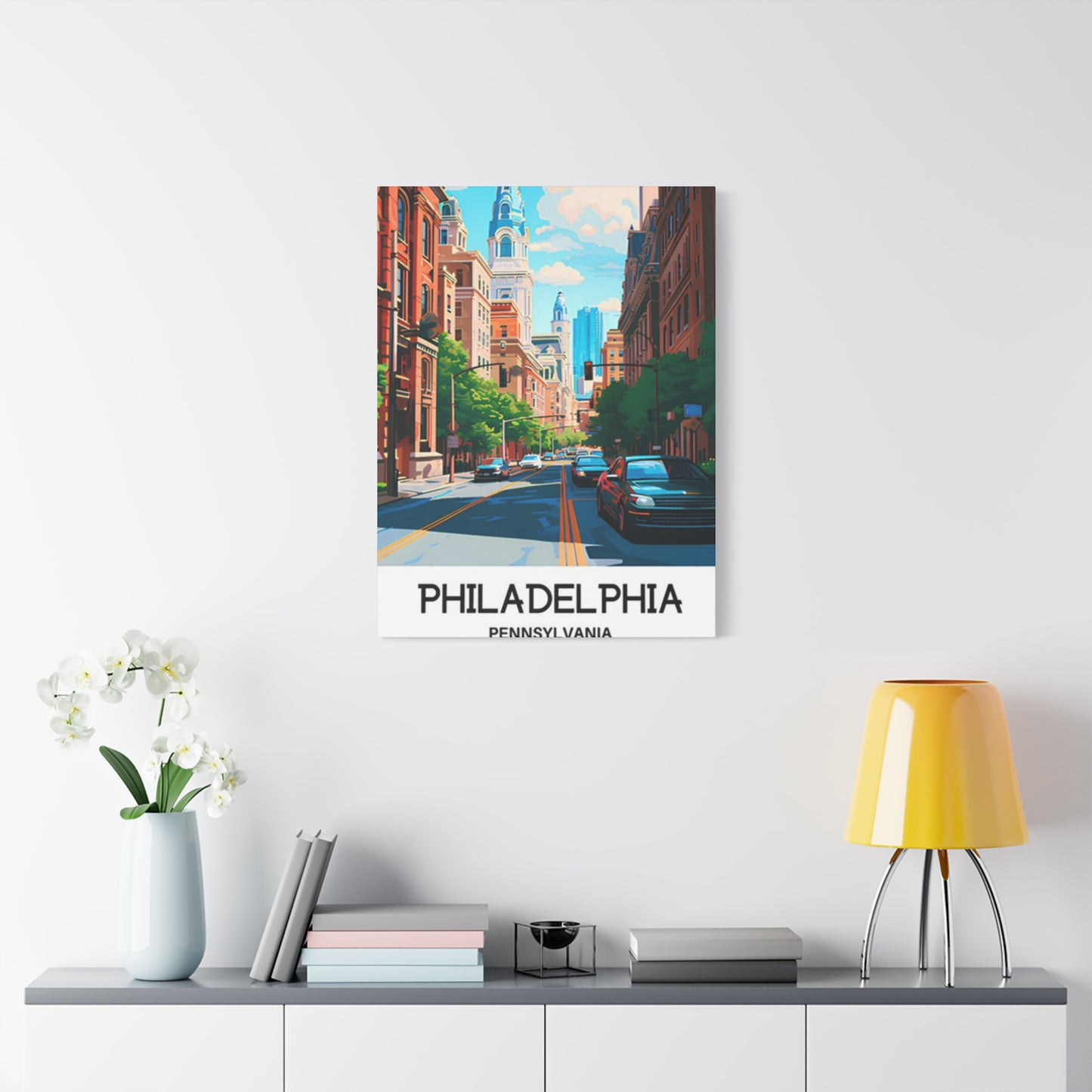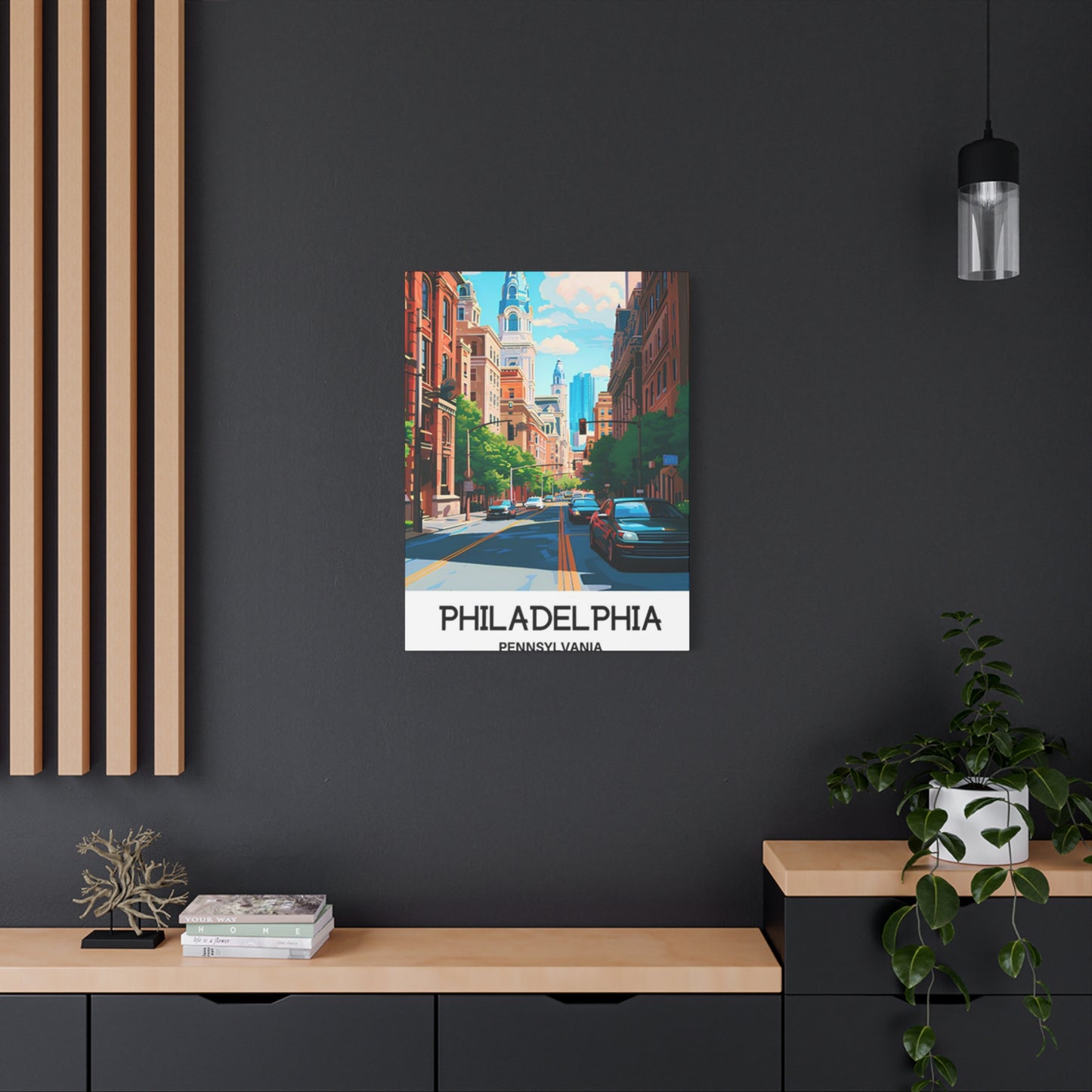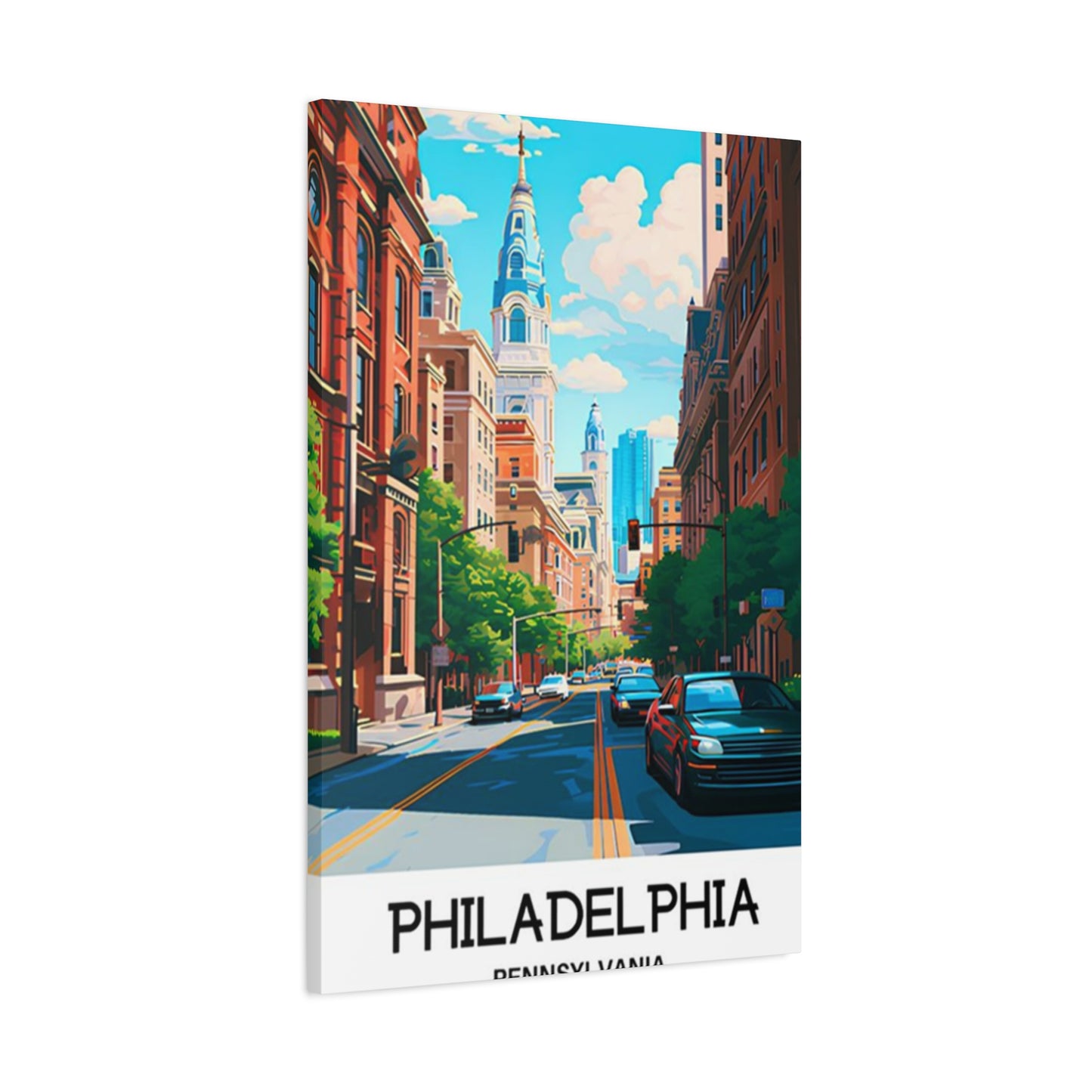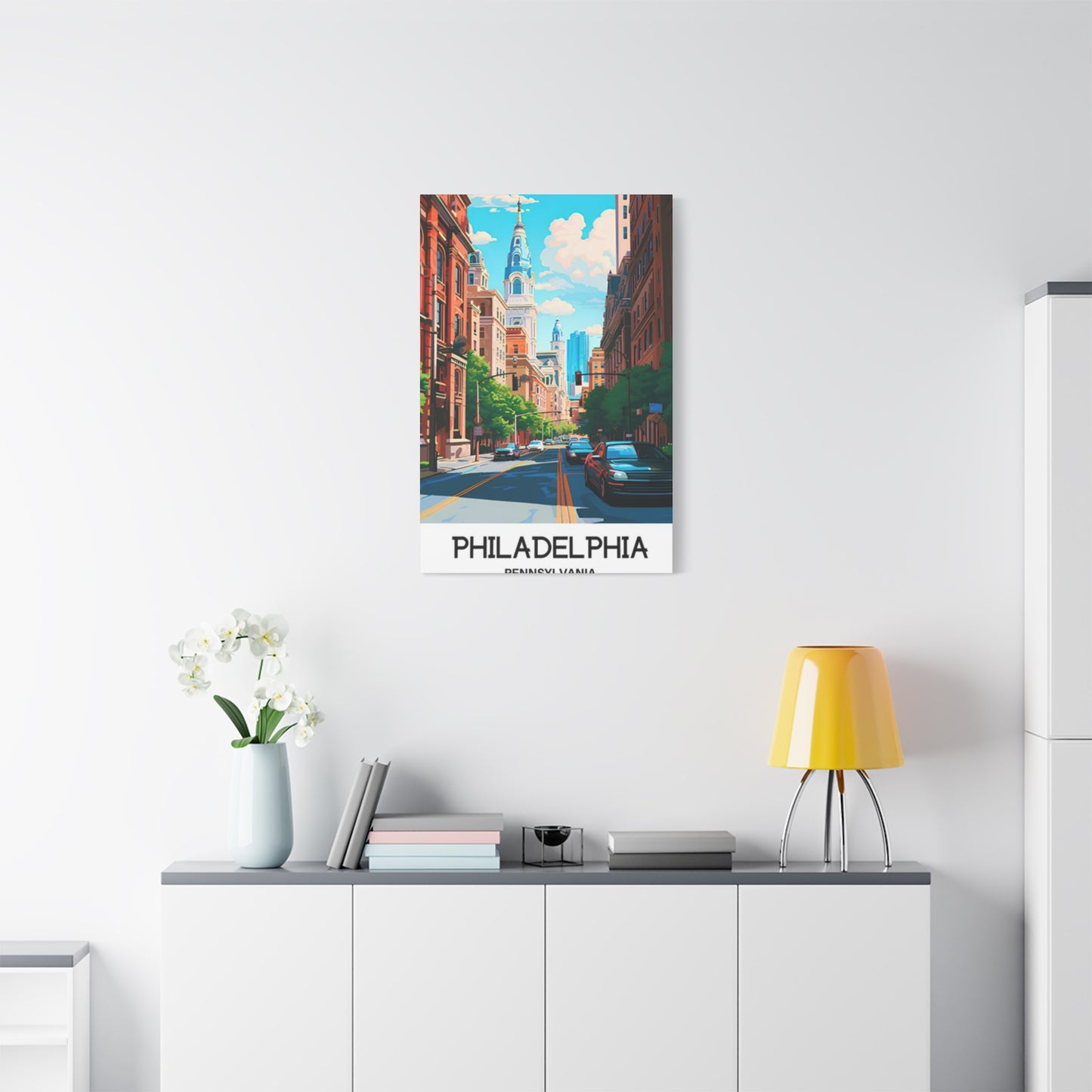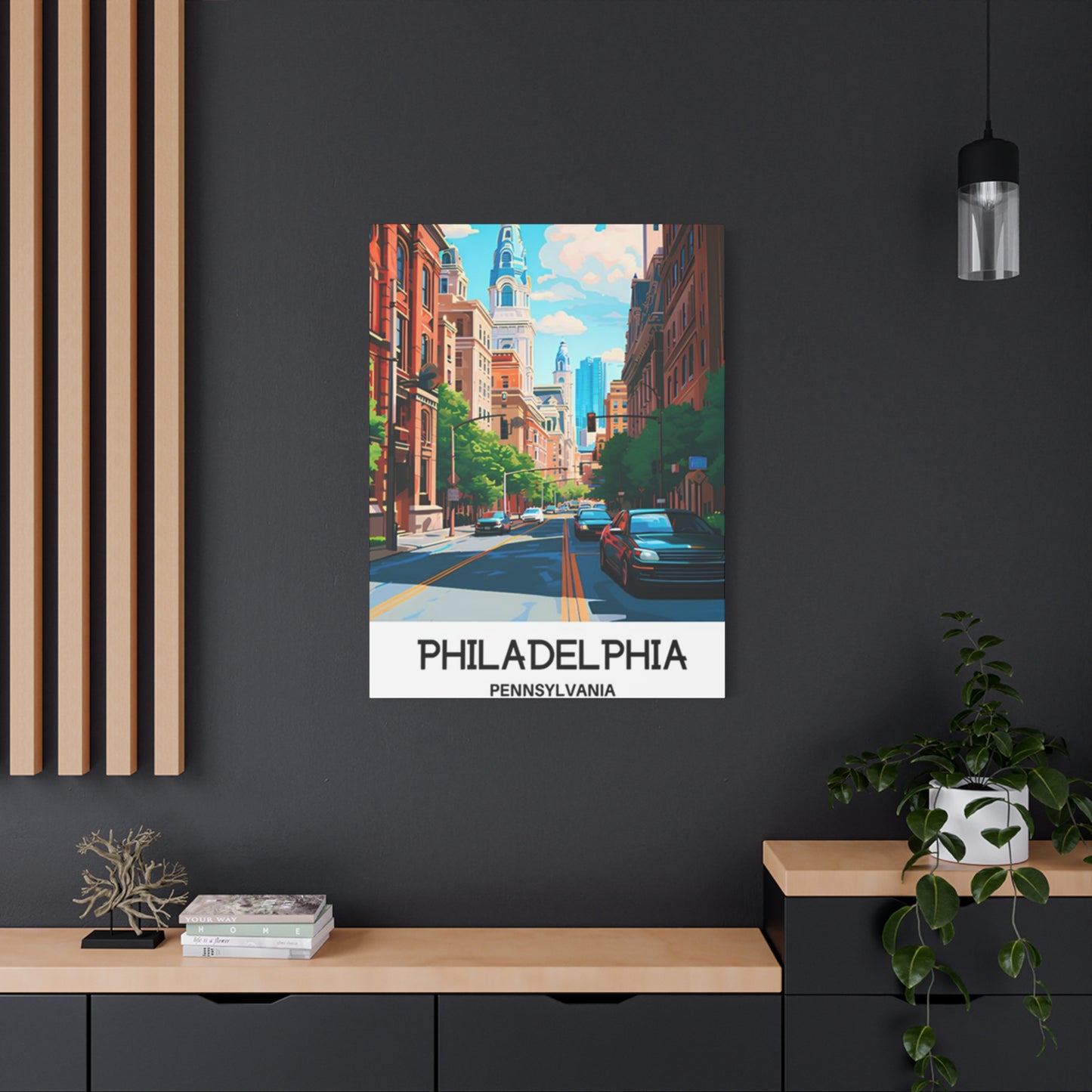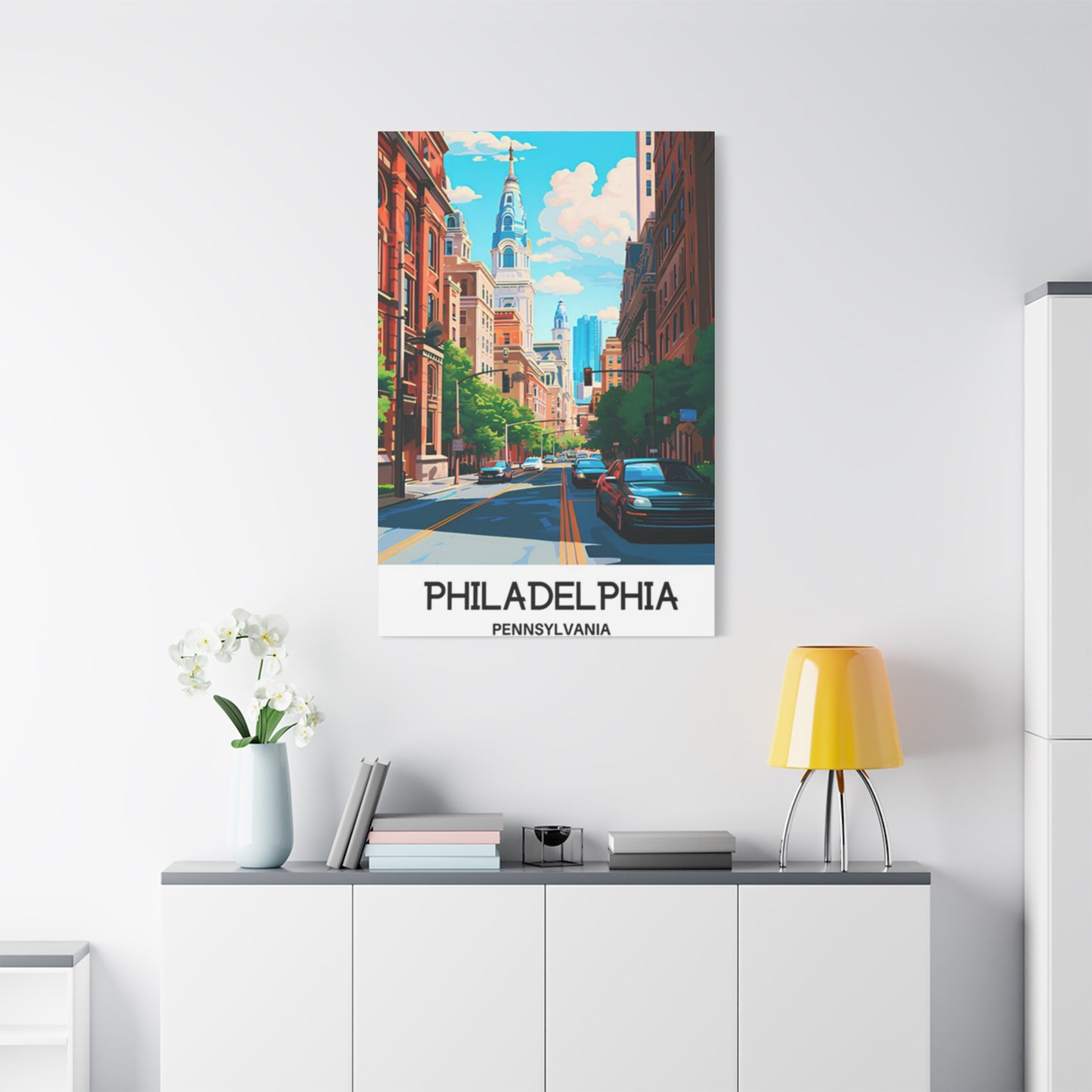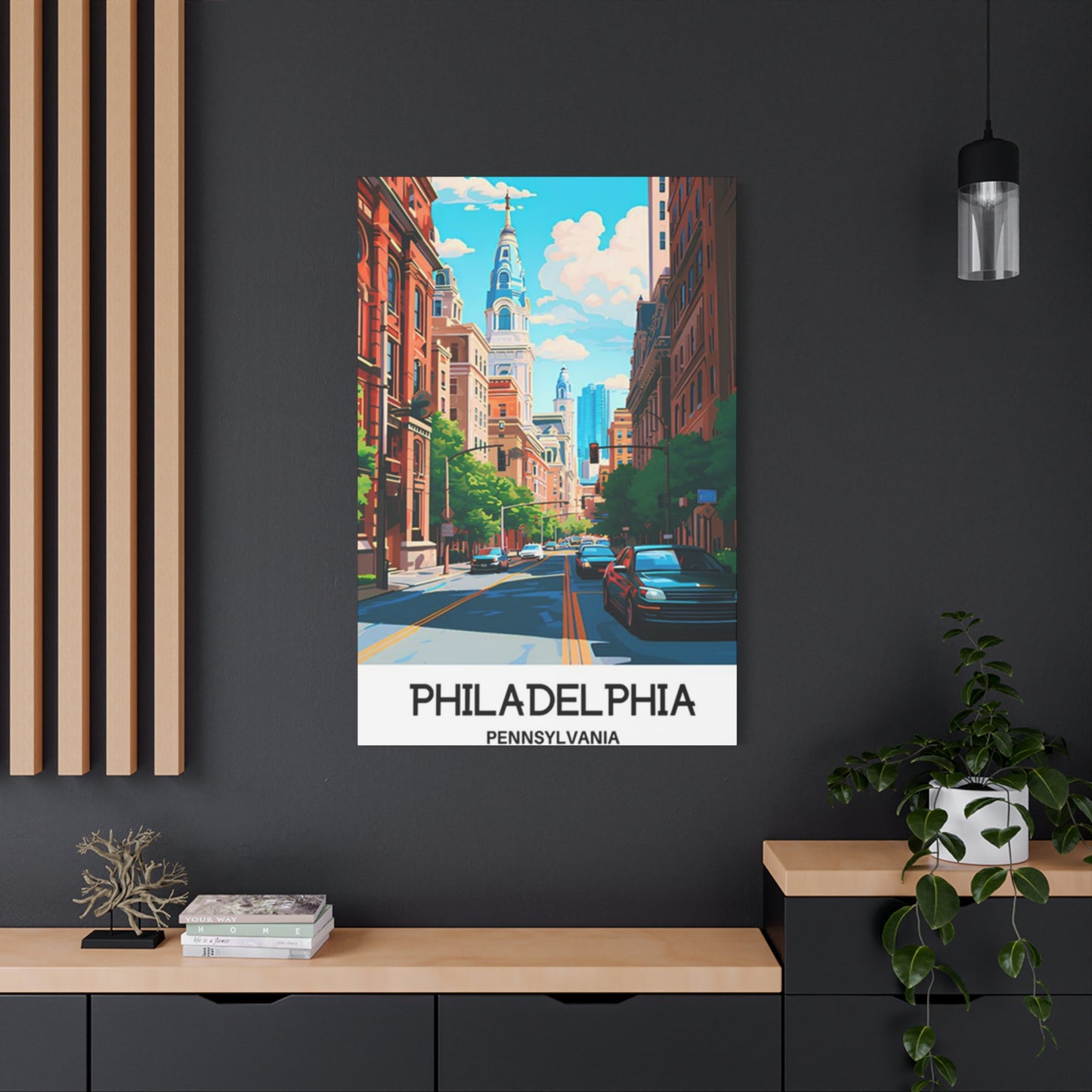Affordable Pennsylvania Poster Wall Art for Students and Young Professionals
The essence of Philadelphia transforms beautifully when captured on canvas, bringing the city's vibrant energy directly into your living space. Canvas artwork featuring Philadelphia themes offers a sophisticated way to celebrate the City of Brotherly Love while adding depth and character to any room. These artistic interpretations go beyond simple photographs, incorporating brushstrokes, textures, and artistic vision that elevate the cityscape into something truly special.
When considering canvas pieces that embody Philadelphia spirit, think about the elements that make this city unique. The cobblestone streets of Old City, the modern glass towers of Center City, the colorful murals that adorn neighborhoods throughout the metropolitan area, and the iconic riverside views all contribute to Philadelphia's distinctive character. Artists who specialize in urban landscapes often capture these elements with a combination of realism and artistic interpretation, creating pieces that feel both authentic and creatively inspired.
Canvas prints offer several advantages over other wall art mediums. The texture of canvas adds dimension to the artwork, creating shadows and highlights that change throughout the day as natural light shifts across the surface. High-quality canvas materials resist fading and maintain their vibrancy for years, making them an investment in your home's aesthetic appeal. The stretched canvas format creates a gallery-worthy presentation without requiring expensive framing, though adding a floating frame can enhance the finished look.
Philadelphia-themed canvas art comes in various styles to suit different tastes and interior design preferences. Abstract interpretations use bold colors and geometric shapes to represent the city's energy and movement. Impressionistic pieces capture the atmosphere and mood of Philadelphia neighborhoods through loose brushwork and evocative color palettes. Realistic renderings showcase architectural details and landmark features with precision and clarity. Mixed media approaches combine painting techniques with photographic elements, creating layered compositions that tell complex visual stories about the city.
The color schemes found in Philadelphia canvas art often reflect the city's natural palette. Warm brick tones reference the historic rowhouses that define many neighborhoods. Cool blues and grays represent the Delaware and Schuylkill Rivers that border the city. Golden hues capture the glow of street lamps and the warm light of sunset reflecting off modern skyscrapers. Green accents acknowledge the extensive park system, including Fairmount Park, one of the largest urban park systems in the country. These color choices help Philadelphia canvas art integrate seamlessly with various interior color schemes while maintaining thematic authenticity.
Size considerations play an important role when selecting canvas art for your space. Large statement pieces measuring three feet or more in width can serve as focal points in living rooms, dining areas, or master bedrooms. Medium-sized canvases work well above furniture pieces like sofas, consoles, or beds, providing visual interest without overwhelming the space. Smaller canvas pieces can be arranged in gallery walls, creating dynamic compositions that tell a broader story about Philadelphia through multiple perspectives and styles.
Pennsylvania Pride in Poster Form
Posters celebrating Pennsylvania offer an accessible and versatile way to express state pride while decorating your home or office. These artistic compositions capture the essence of Pennsylvania through various visual approaches, from vintage travel poster aesthetics to contemporary graphic design. The poster format provides flexibility in display options, affordability compared to other art forms, and the ability to easily update your décor as your tastes evolve or spaces change.
Pennsylvania's rich history and diverse geography provide endless inspiration for poster artists. The state encompasses bustling urban centers, peaceful Amish farmland, rugged mountain ranges, historic battlefields, and charming small towns. Each region contributes distinct visual elements that artists incorporate into their designs. The rolling hills of the Laurel Highlands, the industrial heritage of the Steel City, the agricultural landscapes of Lancaster County, and the forested expanses of the Pocono Mountains all appear in Pennsylvania-themed posters, offering representations that resonate with residents from every corner of the commonwealth.
The vintage poster aesthetic has experienced a significant revival in recent years, and Pennsylvania-themed designs often draw inspiration from early twentieth-century travel posters. These designs typically feature bold, simplified forms, limited color palettes, and typography that evokes a specific historical period. The vintage approach creates nostalgic appeal while maintaining contemporary relevance through modern printing techniques and thoughtful design execution. Such posters work particularly well in spaces with mid-century modern, farmhouse, or eclectic décor styles, adding visual interest and historical context.
Modern graphic design approaches to Pennsylvania poster art embrace clean lines, minimalist compositions, and contemporary color schemes. These designs often focus on iconic symbols, simplified skylines, or abstract representations of Pennsylvania's character. The modern aesthetic appeals to those who prefer streamlined, uncluttered spaces while still wanting to express geographical pride and connection. Typography plays a significant role in modern poster designs, with letterforms sometimes becoming the primary visual element, enlarged and arranged to create striking compositions that communicate location and attitude simultaneously.
Photography-based posters offer another avenue for celebrating Pennsylvania. High-quality photographic prints showcase the state's natural beauty, architectural heritage, and urban vitality through the photographer's lens. These images might capture dramatic landscapes during golden hour, intimate street scenes that reveal daily life, or architectural details that highlight Pennsylvania's building traditions. Photographic posters provide realistic representations that help viewers feel connected to actual places and moments, creating emotional resonance through authentic imagery.
The color psychology in Pennsylvania poster design often reflects regional characteristics and cultural associations. Deep greens represent the state's extensive forests and agricultural heritage. Blues reference the many rivers, including the Susquehanna, Delaware, and Allegheny, that have shaped Pennsylvania's development. Warm earth tones connect to the state's industrial history and natural landscapes. Colonial-era colors like burgundy, navy, and cream appear in designs emphasizing Pennsylvania's role in American independence. These color choices create visual coherence while communicating specific aspects of Pennsylvania identity.
Poster size and format considerations affect both visual impact and practical display options. Standard poster sizes like 18x24 inches or 24x36 inches fit readily available frames and work well in most residential spaces. Oversized posters create dramatic statements in larger rooms or commercial settings. Mini prints and smaller formats allow for flexible arrangements and make collecting multiple designs more feasible. The aspect ratio of your poster should complement the space where it will hang, with vertical orientations suiting narrow wall spaces and horizontal designs fitting well above furniture or in wider areas.
Framing choices significantly impact how Pennsylvania posters integrate into your décor. Simple black or white frames create clean, modern presentations that keep focus on the artwork itself. Wood frames in natural or stained finishes add warmth and work well with traditional or rustic interior styles. Metal frames offer industrial appeal and durability. Matting adds a professional touch and creates visual breathing room around the poster image, though many contemporary designs look equally striking when framed without mats, allowing the image to extend to the frame edges.
Cityscape Elegance: Philly Wall Art
Philadelphia's skyline presents a constantly evolving canvas of architectural achievement, historic preservation, and urban development. Wall art featuring the city's skyline captures this dynamic quality, offering viewers both recognition of familiar landmarks and appreciation for the city's overall composition. Skyline artwork serves as a celebration of urban life, architectural diversity, and the distinctive character that makes Philadelphia recognizable among American cities.
The Philadelphia skyline includes several iconic structures that frequently appear in wall art compositions. City Hall, with its distinctive Second Empire architecture and William Penn statue, anchors many skyline views despite no longer being the tallest structure. The Comcast Technology Center and Comcast Center represent modern Philadelphia, their sleek glass façades reflecting changing light throughout the day. One Liberty Place broke the longstanding gentlemen's agreement about building height and transformed the city's silhouette. Two Liberty Place, the BNY Mellon Center, and other Center City towers contribute to the varied roofline that gives Philadelphia's skyline its distinctive stepped appearance.
Photographing or illustrating the Philadelphia skyline requires consideration of vantage point, which dramatically affects the composition and mood of the resulting artwork. Views from the South Street Bridge offer classic perspectives with the Schuylkill River in the foreground, creating reflection opportunities during calm conditions. The Benjamin Franklin Parkway provides a ground-level approach that emphasizes the relationship between street life and towering architecture. Elevated perspectives from nearby neighborhoods like Roxborough or across the river in Camden showcase the full breadth of the skyline against the horizon. Each vantage point tells a different story about Philadelphia's geography and development.
Time of day significantly impacts the aesthetic quality of Philadelphia skyline art. Dawn images capture soft, cool light washing across building façades as the city awakens. Midday sunshine creates strong contrasts and vibrant colors, emphasizing architectural details and the interplay of light and shadow. Golden hour photography bathes the skyline in warm, glowing light that enhances both natural and artificial elements. Twilight compositions capture the magical transition period when building lights begin to compete with fading daylight, creating layers of illumination. Night photography transforms the skyline into a constellation of lights against the dark sky, emphasizing the city's energy and vitality.
Seasonal variations in Philadelphia skyline art provide opportunities to showcase the city's changing character throughout the year. Spring compositions might include cherry blossoms or other flowering trees in the foreground, connecting natural renewal with urban energy. Summer skylines often feature clear blue skies and full vegetation, creating lush, vibrant scenes. Autumn brings colorful foliage that contrasts beautifully with architectural elements, particularly in views that incorporate park spaces or riverside trees. Winter skylines can appear stark and dramatic, especially after snowfall, with building lights creating warmth against cold conditions.
Artistic styles applied to Philadelphia skyline imagery range from photorealistic to highly abstract. Photographic prints preserve authentic details and accurately represent the city's appearance at specific moments. Watercolor interpretations add softness and atmosphere, with colors bleeding and blending to create dreamlike qualities. Digital illustrations might use bold, simplified forms and limited color palettes reminiscent of travel posters or graphic design. Silhouette treatments reduce the skyline to pure form, creating striking graphic elements that work well in minimalist interiors. Each style offers different aesthetic qualities and emotional resonances.
The horizontal format naturally suits skyline compositions, emphasizing the breadth and expanse of the urban landscape. Panoramic aspect ratios capture extended views that show the full sweep of the city from multiple neighborhoods and districts. These elongated formats work particularly well above furniture pieces, in hallways, or in other spaces where horizontal emphasis enhances the architecture. However, some effective skyline compositions use vertical orientations, focusing on a smaller section of the skyline with more foreground or sky visible, creating different compositional dynamics.
Incorporating foreground elements adds depth and context to Philadelphia skyline art. The Schuylkill River Trail, boat clubs, or riverside parks provide human-scale references that emphasize the skyline's grandeur. Historic bridges like the Girard Avenue Bridge or South Street Bridge add architectural interest and frame skyline views. Including people, cyclists, or other activity suggests the living, breathing quality of the urban environment beyond static buildings. These foreground elements help viewers mentally place themselves within the scene, creating more engaging and relatable compositions.
Historic Philadelphia in Modern Prints
Philadelphia's extraordinary historical significance as the birthplace of American democracy provides rich material for contemporary print artists. Modern printing techniques and design sensibilities allow artists to reinterpret historical subjects in fresh, engaging ways that appeal to current aesthetics while honoring the past. This intersection of history and contemporary art creates pieces that educate, inspire, and beautify spaces while maintaining relevance for today's audiences.
Independence Hall stands as perhaps the most historically significant building in American history, serving as the location where both the Declaration of Independence and the Constitution were debated and adopted. Modern prints featuring Independence Hall range from faithful architectural renderings that highlight the Georgian symmetry and beautiful brickwork to stylized interpretations that emphasize the building's symbolic importance. Some contemporary artists choose to depict the building in historical context, showing period-appropriate surroundings and activity, while others present it in its current setting, surrounded by modern Philadelphia. Both approaches honor the structure's significance while offering different perspectives on its meaning.
The Liberty Bell represents freedom and independence not just for Philadelphia or America, but for people worldwide who recognize it as a symbol of liberty. Modern prints featuring this iconic cracked bell employ various artistic approaches to refresh this familiar image. Close-up compositions focus on the bell's famous crack, the inscribed biblical passage, or surface textures and patinas developed over centuries. Environmental portraits show the bell within its current pavilion with Independence Hall visible through the glass walls. Stylized treatments might reduce the bell to essential forms or reimagine it through unexpected color palettes or graphic treatments that create contemporary appeal while maintaining recognition.
Betsy Ross House, whether or not the actual location where the first American flag was sewn, represents colonial Philadelphia and early American craftsmanship. Modern prints featuring this historic home often capture the charming colonial architecture, the narrow streets of Old City, or the compelling flag story itself through illustrative approaches. Contemporary artists might emphasize the building's age through weathered textures and historical details, or celebrate its preservation and ongoing relevance through bright, optimistic treatments. The surrounding neighborhood context adds layers of meaning, showing how historic structures persist within a living, changing city.
Elfreth's Alley, America's oldest continuously inhabited residential street, offers extraordinary visual material for modern print artists. The narrow cobblestone lane lined with well-preserved colonial homes creates intimate, human-scaled compositions that contrast dramatically with Philadelphia's modern urban core. Prints featuring Elfreth's Alley might emphasize the street's length and perspective, creating depth through the repetition of doorways and windows. Detail-focused compositions could highlight architectural elements like shutters, doors, hardware, or the cobblestones themselves. Seasonal variations show the street dressed in different conditions, from spring flowers to winter snow, demonstrating its enduring presence through changing times.
Philadelphia City Hall, the largest municipal building in the United States and among the finest examples of Second Empire architecture anywhere, provides spectacular subject matter for contemporary prints. The building's extraordinary sculptural program, designed by Alexander Milne Calder, includes hundreds of sculptures adorning every surface. Modern prints might focus on the William Penn statue at the building's apex, architectural details like the clock towers and dormers, or the overall massing and composition of this remarkable structure. Some contemporary treatments emphasize the building's ornate, maximalist character through detailed, busy compositions, while minimalist approaches might extract simplified forms from the complex whole.
Benjamin Franklin Parkway, modeled after the Champs-Élysées in Paris, creates a grand boulevard connecting City Hall with the Philadelphia Museum of Art. Modern prints featuring the Parkway celebrate this urban planning achievement and the cultural institutions along its length. Compositions might show the tree-lined boulevard stretching toward the museum, the internationally themed flags that line the route, or the fountain and plaza spaces that create gathering places. The Parkway represents early twentieth-century City Beautiful ideals translated into Philadelphia's urban fabric, and contemporary prints can emphasize either the historical vision or current vitality of this important civic space.
The Philadelphia Museum of Art, particularly its iconic steps made famous by the film Rocky, appears frequently in modern prints that celebrate both high culture and popular culture associations. The neoclassical building crowning Fairmount provides spectacular visual material with its columned entrance, symmetrical composition, and elevated position overlooking the city. Modern print artists might choose straight architectural documentation, stylized graphic treatments, or contextual views showing the museum's relationship to the Parkway and skyline. The cultural tension between the museum's serious artistic mission and its popular culture fame creates interesting opportunities for interpretive approaches.
Philadelphia Skyline for Urban Homes
Urban living environments present unique opportunities and challenges for incorporating wall art, and Philadelphia skyline imagery naturally complements metropolitan home settings. The visual connection between artwork depicting urban landscapes and the surrounding city environment creates coherent interior design that acknowledges and celebrates the urban experience. Skyline art in city homes serves multiple functions: aesthetic enhancement, place-based identity expression, and visual reminder of the broader urban context beyond individual apartments or rowhouses.
Contemporary urban interiors often feature open floor plans, high ceilings, exposed brick or ductwork, and large windows that maximize natural light and city views. Philadelphia skyline art integrates seamlessly into these industrial-influenced spaces, complementing rather than competing with architectural features. The geometric nature of skyline compositions echoes the linear elements common in urban spaces like exposed beams, window frames, and built-in shelving. The color palette of skyline imagery, typically featuring blues, grays, and warm accent tones, harmonizes with the materials prevalent in urban homes including concrete, steel, wood, and glass.
Scale becomes particularly important when selecting Philadelphia skyline art for urban residences. Large-scale pieces measuring four feet or more in width create commanding focal points in loft spaces or open living areas where substantial artwork is necessary to anchor the visual field and prevent the space from feeling empty or unfinished. Medium-sized works suit most standard residential spaces, providing sufficient presence without overwhelming rooms with lower ceilings or smaller dimensions. In compact urban apartments where wall space is limited, carefully chosen smaller skyline pieces can still make meaningful contributions to the overall aesthetic without dominating precious square footage.
The vantage point depicted in your Philadelphia skyline art affects how it relates to your actual location within the city. If you live in Center City, artwork showing views approaching from the south or west creates a sense of looking back at your neighborhood from an external perspective. For residents of neighborhoods like Fishtown, Northern Liberties, or West Philadelphia, skyline art depicting views from those areas creates more immediate geographical connection and recognition. Some urban dwellers prefer skyline art showing perspectives they regularly experience from their own windows or commute routes, creating visual continuity between art and lived experience.
Layering Philadelphia skyline art with other city-themed pieces creates rich, cohesive interior narratives about urban life. Combining skyline views with neighborhood street scenes, architectural detail photography, or abstract urban-inspired works builds complex visual stories about Philadelphia's character and your personal relationship with the city. This approach allows for more nuanced expression than single-piece displays while creating gallery-wall arrangements that fill larger wall spaces and demonstrate sophisticated collecting sensibilities. Varying sizes, frames, and artistic styles within a cohesive color palette prevents monotony while maintaining overall harmony.
Lighting considerations significantly affect how Philadelphia skyline art appears within urban homes. Natural light from large windows changes throughout the day, alternately illuminating and shadowing wall art depending on sun angle and weather conditions. This dynamic quality can enhance skyline imagery by creating parallels with the actual lighting changes occurring in the real cityscape outside your windows. For walls without natural light exposure or for evening viewing, thoughtfully positioned picture lights or track lighting can highlight your skyline art, drawing attention and creating focal points within your space. Uplighting can create dramatic effects with unframed prints, while spotlighting works well with framed pieces.
The reflective glass common in Philadelphia skyline photography or prints under glass can create challenges in urban homes with abundant windows. Positioning artwork to minimize problematic reflections requires consideration of window locations and the angles at which light enters your space throughout the day. Sometimes moving artwork a few feet in either direction eliminates distracting glare. Alternatively, choosing matte-finish prints or works on canvas eliminates glass entirely, preventing reflections while creating textured, non-glossy presentations that complement industrial urban materials.
Philadelphia skyline art contributes to the sense of place that makes urban homes feel personally meaningful rather than generic. In a city where people frequently move between apartments or neighborhoods, skyline artwork provides continuity and stability, maintaining your visual connection to Philadelphia even when your specific address changes. For urban professionals who may have lived in multiple cities throughout their careers, dedicating wall space to Philadelphia skyline art represents a conscious choice to identify with and commit to this particular place, creating psychological grounding and community connection.
Pennsylvania Landmarks Reimagined
Pennsylvania contains numerous landmarks of national and regional significance beyond Philadelphia, and contemporary artists continually find fresh approaches to depicting these familiar subjects. Reimagining well-known landmarks through new artistic lenses prevents these important places from becoming visual clichés while honoring their significance. This artistic reinterpretation bridges past and present, tradition and innovation, creating artwork that respects heritage while speaking to contemporary sensibilities.
The Pennsylvania State Capitol in Harrisburg, described by President Theodore Roosevelt as the handsomest state capitol building he had ever seen, provides spectacular subject matter for artistic reinterpretation. The building's grand dome, inspired by St. Peter's Basilica in Rome, rises prominently above Harrisburg's skyline. Contemporary artists might focus on the capitol's external massing and dome, the elaborate interior spaces including the rotunda and legislative chambers, or the surrounding grounds and nearby Susquehanna River. Reimagined approaches could emphasize geometric patterns within the architecture, play with color to create unexpected moods, or frame the building within broader urban or natural contexts.
Fallingwater, Frank Lloyd Wright's masterpiece in the Laurel Highlands, stands as one of the most famous houses in architectural history and Pennsylvania's most iconic modern landmark. The building's dramatic cantilevers extending over the waterfall create extraordinary visual drama that has been photographed countless times. Contemporary artistic reinterpretations face the challenge of finding fresh perspectives on this thoroughly documented building. Artists might focus on lesser-known angles, emphasize seasonal or atmospheric conditions, abstract the building's forms and relationships, or explore the integration of architecture and natural environment through stylized approaches rather than literal documentation.
The Gettysburg Battlefield, site of the Civil War's pivotal battle and President Lincoln's famous address, carries enormous historical and emotional weight. Artistic reinterpretations of Gettysburg must balance reverence for the site's significance with creative vision. Contemporary approaches might emphasize the peaceful, pastoral quality of the current landscape in contrast to its violent history, focus on specific monuments and memorials, or create conceptual pieces that explore themes of sacrifice, reunion, and national identity. The challenge lies in creating artwork that honors memory and meaning while offering fresh visual perspectives.
Hersheypark and the town of Hershey represent Pennsylvania's more playful side, connected to chocolate production and amusement park entertainment. Reimagined artwork celebrating this sweet heritage might employ vintage travel poster aesthetics, bold graphic design approaches emphasizing chocolate and confection imagery, or nostalgic treatments that capture the wholesome family entertainment atmosphere. Contemporary artists can emphasize either the historical development of Hershey as a planned community or its current identity as a tourist destination, creating pieces that appeal to nostalgia or current enthusiasm.
The Pennsylvania Grand Canyon, actually called Pine Creek Gorge, offers spectacular natural beauty that rivals its more famous western namesake. This deep gorge cutting through northcentral Pennsylvania provides dramatic landscape subject matter for contemporary artists. Reimagined approaches might emphasize the gorge's depth and scale through exaggerated perspective, capture specific overlook views through various seasonal or atmospheric conditions, or abstract the landscape into patterns of color and form. The relative obscurity of this landmark compared to major urban or historical sites creates opportunities for artistic interpretation unconstrained by overly familiar imagery.
Longwood Gardens in the Brandywine Valley showcases horticultural excellence across more than one thousand acres of display gardens, meadows, and woodlands. The gardens' seasonal displays, historic conservatory, fountain shows, and landscape architecture provide abundant subject matter for artistic exploration. Reimagined approaches might focus on macro details of specific plants and blooms, capture the grand scale and formal design of garden rooms, explore the interplay of natural and architectural elements, or create impressionistic interpretations emphasizing color, light, and atmosphere over literal documentation.
The Strasburg Rail Road, America's oldest continuously operating railroad, represents Pennsylvania's railroad heritage and the importance of rail transportation in the state's development. Contemporary artistic interpretations might emphasize the romance of steam railroading through vintage-inspired poster designs, document the beautiful rolling farmland through which the railroad passes, focus on mechanical details and industrial aesthetics, or capture the experience of heritage tourism through narrative compositions. The surrounding Lancaster County Amish countryside adds layers of cultural meaning and visual interest.
Philly City Lights on Canvas
The illuminated nighttime cityscape presents dramatically different visual material than daylight urban scenes, and Philadelphia city lights captured on canvas offer sophisticated, atmospheric wall art. Nighttime urban imagery emphasizes artificial illumination, creates opportunities for bold color contrasts, and transforms familiar landmarks into glowing jewels against dark backgrounds. Canvas treatments of city lights benefit from the medium's ability to build layers and textures that enhance the luminous quality of nighttime scenes.
The technical challenges of capturing city lights effectively require both photographic and artistic skill. Long exposure photography gathers available light over extended periods, creating bright illumination and revealing details invisible to the naked eye in dark conditions. However, excessive exposure times can create unrealistic results with overblown highlights and loss of shadow detail. Finding the balance between gathering sufficient light and maintaining authentic darkness requires experience and judgment. When translating photographic city light images to canvas, artists make additional decisions about color saturation, contrast, and the rendering of illuminated areas versus surrounding darkness.
The color palette of Philadelphia city lights on canvas typically features strong contrasts between warm and cool tones. Streetlights and interior building illumination often cast warm golden or orange glows, while twilight skies and reflected water surfaces lean toward cool blues and purples. Neon signs, car lights, and architectural accent lighting introduce spots of pure color - reds, greens, blues - that create visual interest and guide the eye through compositions. These color relationships create the distinctive atmosphere of nighttime urban scenes, simultaneously suggesting energy and intimacy, excitement and stillness.
Composition becomes particularly important in city lights artwork since darkness simplifies forms and reduces visual information compared to daylight scenes. Illuminated elements create pathways for the viewer's eye, and thoughtful composition guides this visual journey through the canvas. Leading lines formed by street lights, building edges, or reflections direct attention toward focal points. Balanced distribution of light and dark areas prevents compositions from becoming either monotonously bright or impenetrably dark. Negative space, often appearing as dark sky or shadowed areas, provides visual rest and emphasizes illuminated elements through contrast.
Reflections multiply the visual impact of city lights when water surfaces appear in compositions. The Schuylkill River reflecting Philadelphia's illuminated skyline essentially doubles the amount of light in the image while creating beautiful mirror images that add symmetry and visual interest. Wet streets after rain create similar reflective opportunities, transforming pavement into shimmering surfaces that catch and multiply available light. Artists working with city lights imagery often seek out or wait for conditions that maximize these reflection opportunities, understanding their power to enhance compositions and create magical atmospheric effects.
The treatment of bokeh, the aesthetic quality of blur in out-of-focus areas, significantly affects city lights on canvas. Intentional defocusing transforms point light sources into soft glowing circles or shapes determined by lens aperture configuration. This technique creates dreamy, romantic effects particularly popular in city lights imagery. When translating photographic bokeh to canvas, artists must decide whether to preserve this effect through soft-edged painted circles or interpret the lights differently. The resulting aesthetic choices significantly impact the overall mood and style of the finished piece.
Urban Aesthetics: Iconic Landmarks and Cityscapes
For many, the Pennsylvania experience is defined by its two major urban centers: Philadelphia and Pittsburgh. Each city possesses a distinct personality, unique architectural language, and skylines that have inspired artists for generations. Cityscape posters are a timeless and sophisticated choice, offering a dynamic energy perfect for a student’s study area or a young professional’s living room.
In Philadelphia, prints of the iconic Ben Franklin Bridge stretching over the Delaware River or the historic silhouette of Independence Hall blend history with contemporary urban life. These images resonate not only as landmarks but as symbols of resilience, innovation, and democratic ideals. For Pittsburgh enthusiasts, posters featuring the "City of Bridges" — where the Allegheny, Monongahela, and Ohio Rivers converge beneath striking steel structures — capture both the grit and beauty of a city transformed from industrial powerhouse to cultural hub. The view from Mount Washington at sunset or night, with the city lights twinkling, is particularly popular for evoking a sense of homegrown pride.
These urban prints often come in styles ranging from minimalist line drawings to vibrant photographic panoramas, suiting diverse tastes and décor preferences. Affordable prints are readily available online and from local artists, providing accessible options without sacrificing quality or style. Choosing cityscapes for your walls not only celebrates Pennsylvania’s urban identity but also keeps you connected to the rhythms and stories of your daily environment.Not every Pennsylvanian lives in or near the city, and for those who crave a touch of nature or seek respite from urban hustle, nature-themed poster art offers a perfect alternative. The state’s vast parks, rolling hills, and serene lakes provide endless inspiration for wall décor.
The Poconos, with their rugged mountains and pristine lakes, frequently feature in watercolor prints, vintage travel posters, and photographic art. These images evoke a sense of calm and adventure, reminding students and young professionals to balance work with moments of outdoor exploration and relaxation. The Delaware Water Gap, Ricketts Glen State Park’s waterfalls, and the lush expanses of the Allegheny National Forest offer stunning visuals that can brighten any room and inspire weekend getaways.Nature-themed art appeals to those who want their living space to reflect not just where they live, but the lifestyle they aspire to—one that includes hiking, camping, or simply appreciating the changing seasons. And like urban prints, many nature posters are available at affordable prices from local print shops, online marketplaces, or even university art fairs.
Natural Escapes: Capturing Pennsylvania’s Great Outdoors
While its cities are famous, much of Pennsylvania is a rural and forested paradise. Officially named one of the Great American Forests, Pennsylvania offers a vast and varied landscape, from rolling hills and dense woodlands to tranquil lakes and winding rivers. Bringing this scenery into your home can create a peaceful, restorative atmosphere, perfect for unwinding after a long day of classes or work. For students and young professionals navigating busy schedules, nature-themed wall art offers a much-needed visual escape—a daily reminder to pause, breathe, and connect with the wider world beyond deadlines and responsibilities. The state's sheer variety of natural beauty, often accessible within a short drive from major metropolitan areas like Philadelphia and Pittsburgh, makes it an ideal source of inspiration for interior décor, particularly for those seeking to infuse their personal space with a sense of calm and perspective.
The Allegheny National Forest in the northwestern part of the state, for instance, offers a profound sense of wilderness. Images of its towering black cherry, oak, and maple trees—often shrouded in mist or dappled with sunlight—can transform a sterile living space into a contemplative retreat. Posters focusing on its intricate network of hiking trails or the quiet expanse of the Allegheny Reservoir are not just pictures; they are windows to tranquility. For those living in small apartments or dorm rooms, where square footage is limited, a large-format canvas print of a deep, green Pennsylvania forest can visually expand the space, tricking the eye into believing the room extends into the pictured landscape. This effect is powerful, turning a cramped study area into a more open and less claustrophobic environment. Furthermore, the inclusion of natural elements in interior design is proven to reduce stress and improve cognitive function, a concept known as biophilia.
Incorporating a print of a serene PA creek or a mountaintop panorama is a simple, affordable way to leverage this psychological benefit. The visual texture and organic lines of the natural world contrast sharply with the rigid, straight edges of buildings and furniture, offering a much-needed visual balance. Selecting artwork that focuses on elements like flowing water, whether it be the mighty Susquehanna River or a smaller hidden tributary, can also introduce a dynamic, yet peaceful, energy into a room, symbolizing movement, renewal, and continuity. Ultimately, Pennsylvania's outdoor art provides a constant, gentle prompt to prioritize well-being, reminding inhabitants that the vast, beautiful world exists just beyond their doorstep, waiting to offer solace and adventure. It's an aesthetic choice that doubles as a mental health strategy, grounding the viewer amidst the chaotic pace of modern life.
Iconic Landscapes and Scenic Views
The Poconos region is perhaps the most well-known nature destination in Pennsylvania, famed for its mountains, waterfalls, and seasonal foliage. Posters and prints featuring this area often showcase mist-covered peaks at dawn, crystal-clear lakes reflecting autumn colors, or sparkling waterfalls cascading into serene pools. These images, whether rendered as vivid photographs, soft watercolors, or even vintage-inspired travel posters, bring a sense of calm and natural beauty into any space. For students, such prints provide a soothing focal point during study breaks, while young professionals might appreciate the nostalgic nod to weekend getaways and nature retreats. The Poconos offer a classic example of the sublime in nature, and artwork capturing its grandeur serves as an instant mood enhancer.
For example, a print of Bushkill Falls, often called the "Niagara of Pennsylvania," with its multi-tiered cascades, introduces a dynamic vertical element that can make low-ceilinged rooms feel taller and more dramatic.Similarly, the Delaware Water Gap, where the Delaware River carves a spectacular valley through the Appalachian Mountains, offers breathtaking vistas. Posters capturing this dramatic landscape—whether from the vantage point of a hiking trail or a riverside vista—remind viewers of the state’s rugged beauty and outdoor opportunities. For nature lovers, such artwork is a visual invitation to explore, reconnect, and find balance.
The gap’s distinctive "V" shape and the meandering flow of the river through it symbolize resilience and the power of nature to shape the world over time. Artwork focusing on specific landmarks within the region, such as the view from Mount Tammany or the quiet reflection of the river at sunset, can be deeply personal choices, reflecting a favorite hike or a memorable trip. Furthermore, for those interested in geology or environmental science, these prints are more than just decoration; they are a visual representation of tectonic forces and hydraulic erosion at work. The Appalachian Trail runs right through the Water Gap, making prints of its iconic trail markers or sweeping mountain views particularly resonant for hikers.
The color palettes associated with these mountain landscapes tend toward deep greens, earth tones, and vibrant blues, which are inherently grounding and calming. By selecting artwork that highlights the vast scale of the Water Gap, occupants are subtly encouraged to put their daily stressors into a larger, more manageable perspective. The presence of such an imposing, yet serene, natural scene acts as an anchor point in the room, making it feel less like a temporary dwelling and more like a permanent, reflective sanctuary. Choosing a black-and-white photo of these peaks can also lend a timeless, classic feel, focusing purely on the composition and texture of the rock and foliage.
Rustic Charm: The Pastoral Beauty of Lancaster County
Beyond the mountainous regions, Pennsylvania’s Amish country and agricultural heartland, primarily Lancaster County, hold a special place in the state’s identity. Prints depicting rustic barns, rolling farmland, and the iconic hex signs that adorn many Amish homes tap into a simpler, slower way of life that can be particularly appealing in urban living environments. These pastoral scenes can serve as a grounding counterpoint to the hustle and bustle of city life, offering comfort and warmth. The Lancaster County aesthetic is defined by its soft, undulating topography, crisscrossed by stone fences and dotted with vibrant green fields that transition to rich gold in the late summer. Art capturing this landscape often employs a warm, sun-drenched palette that evokes feelings of nostalgia, security, and wholesomeness.
For those who appreciate folk art or Americana styles, Lancaster County-themed prints often feature bold colors and traditional motifs that add a unique decorative flair. Affordable prints and posters celebrating this region are widely available and make a meaningful statement about valuing heritage, craftsmanship, and community. The hexagonal hex signs themselves are fascinating subjects, traditionally painted on barns not just for decoration but also for good luck and protection, with specific symbols representing blessings like fertility, good harvest, or enduring love. A print series focusing solely on the variety and geometric beauty of these signs can offer a contemporary, abstract-like take on a deeply traditional theme. This kind of artwork is particularly suitable for spaces where a sense of history and handcrafted quality is desired.
Moreover, the prevalence of covered bridges in this region provides another rich visual subject. A print of a dark, rustic covered bridge spanning a small creek is an immediate symbol of quaint, hidden Pennsylvania beauty and offers a strong sense of architectural texture to a wall. These images speak to the value of honest work and a strong connection to the land, ideals that can be highly motivating and calming for busy students or professionals. They serve as a constant, quiet reminder that life doesn't always have to move at breakneck speed and that there is profound beauty and stability in the cycle of the seasons and the rhythm of farming. Incorporating such a piece of art is a subtle act of resistance against the uniformity of modern, mass-produced décor, opting instead for a piece that is distinctly regional, warm, and rich with cultural narrative.
Seasonal Splendor: Pennsylvania’s Four-Season Canvas
One of the great joys of Pennsylvania’s natural environment is the clear delineation of the four seasons, each bringing its own distinct palette and mood. Wall art celebrating these seasonal changes can provide year-round inspiration and prevent a space from feeling visually stale. Think of a snowy winter scene with frost-laden trees and softly glowing street lamps for cozy dorm décor, or a vibrant springtime wildflower meadow for a fresh, energetic living room accent. The ability of the artwork to change the perceived temperature and mood of a room is one of its most powerful benefits. A cool, blue-toned winter print can offer a serene, quiet contrast to a brightly lit room, inviting a sense of introspection, while a warm, golden autumn print can instantly make a room feel cozier and more inviting.
Summer scenes might highlight the deep greens of shaded forests or the sunlit waters of Lake Wallenpaupack, while autumn prints celebrate the fiery reds and golds of falling leaves—an iconic image of Pennsylvania’s fall foliage. The autumn spectacle, in particular, is a visual hallmark of the state, especially in areas like the Laurel Highlands or the Endless Mountains. An oversized canvas print of a mountain ridge ablaze with crimson, orange, and yellow can become the undisputed focal point of a living area, instantly infusing it with warmth and dramatic natural beauty. For students, rotating artwork with the seasons—or simply having a multi-panel piece that depicts all four seasons simultaneously—can offer a tangible connection to the passage of time and the natural world outside the confines of their study space.
This cyclical perspective can be particularly grounding, emphasizing renewal and change. A springtime piece, focusing on the soft pastels of new blossoms, such as the mountain laurel (the state flower), can introduce a much-needed sense of optimism and freshness after a long winter. The diversity of Pennsylvania’s flora and fauna—from the bright pink of the Redbud in spring to the deep emerald of pine trees in winter—provides an endless array of color schemes and textures for artists to interpret. Choosing art that intentionally celebrates this full cycle of nature is a sophisticated design choice that ensures the room’s atmosphere remains dynamic and relevant throughout the year, fostering a deep, subconscious appreciation for the state’s ecological richness.
Conclusion
In conclusion, affordable Pennsylvania poster wall art offers students and young professionals an excellent opportunity to personalize their living or working spaces with meaningful and stylish décor. These posters not only enhance the aesthetic appeal of a room but also serve as a reflection of one's connection to the state, its culture, and its landmarks. Whether it's a vintage travel print of Philadelphia, a modern map of Pennsylvania, or a depiction of the Pocono Mountains, these artworks provide a cost-effective way to bring a piece of Pennsylvania into any space.
One of the key advantages of opting for Pennsylvania-themed posters is their versatility. They can complement various interior design styles, from minimalist and contemporary to rustic and eclectic. The wide range of available designs ensures that there's something to suit every taste and preference. Additionally, many of these posters are available in different sizes, allowing for flexibility in placement and arrangement within a room.
Moreover, purchasing affordable Pennsylvania poster wall art supports local artists and businesses. Many of these artworks are created by Pennsylvania-based artists or are sold through local shops and online platforms that prioritize regional craftsmanship. By choosing these pieces, buyers contribute to the local economy and help sustain the vibrant art community within the state.
For students and young professionals, budget-friendly options are essential. Fortunately, numerous online retailers and local stores offer Pennsylvania-themed posters at reasonable prices. Platforms like Etsy, Amazon, and local art fairs provide a plethora of choices, often with the added benefit of customization options. Whether it's selecting a specific size, frame, or design, these platforms make it easy to find the perfect piece that aligns with one's budget and style.
Furthermore, these posters can serve as thoughtful gifts for friends, family, or colleagues who have a connection to Pennsylvania. They make for memorable and personal presents that carry sentimental value, especially for those who have lived in or visited the state. The affordability of these artworks ensures that they can be given without breaking the bank, making them accessible options for various occasions.
In summary, affordable Pennsylvania poster wall art is more than just decoration; it's a means of expressing personal identity, supporting local artists, and creating a space that feels like home. With a multitude of designs, sizes, and price points available, students and young professionals can easily find pieces that resonate with them and fit within their budgets. Whether adorning a dorm room, apartment, or office, these posters bring a touch of Pennsylvania's charm and character to any environment.

















